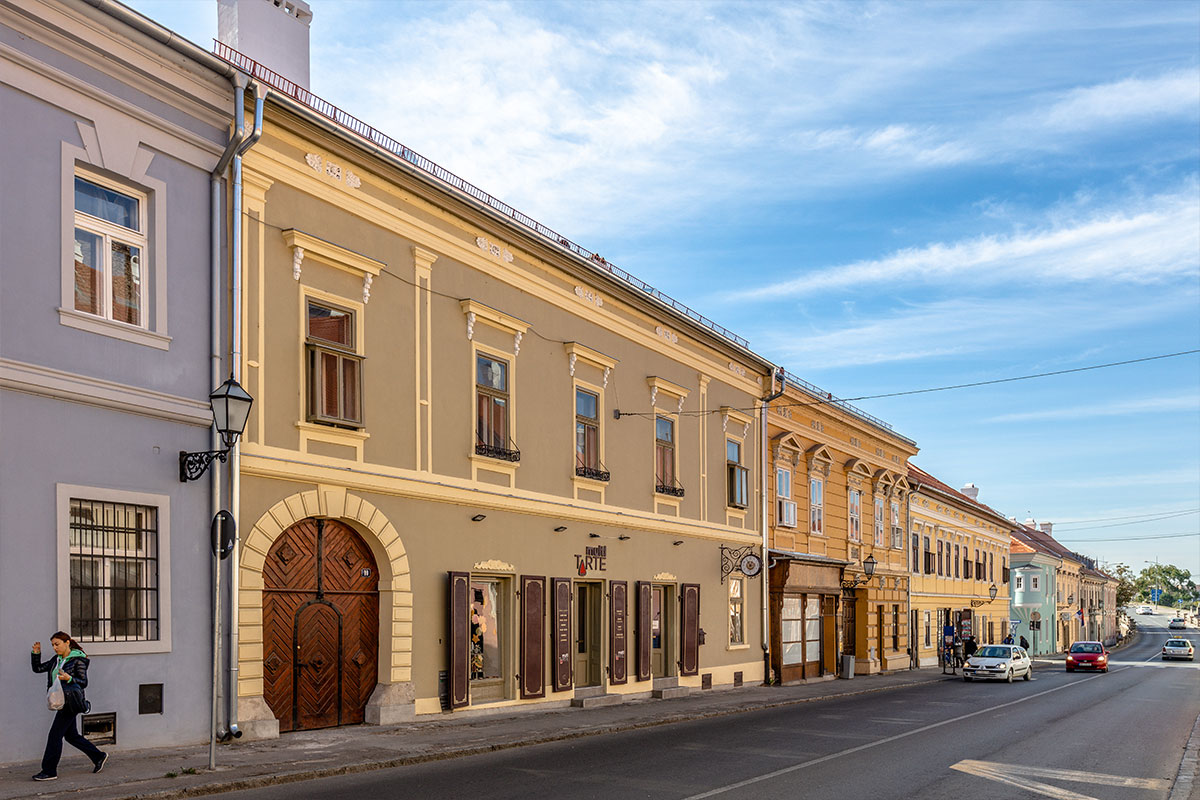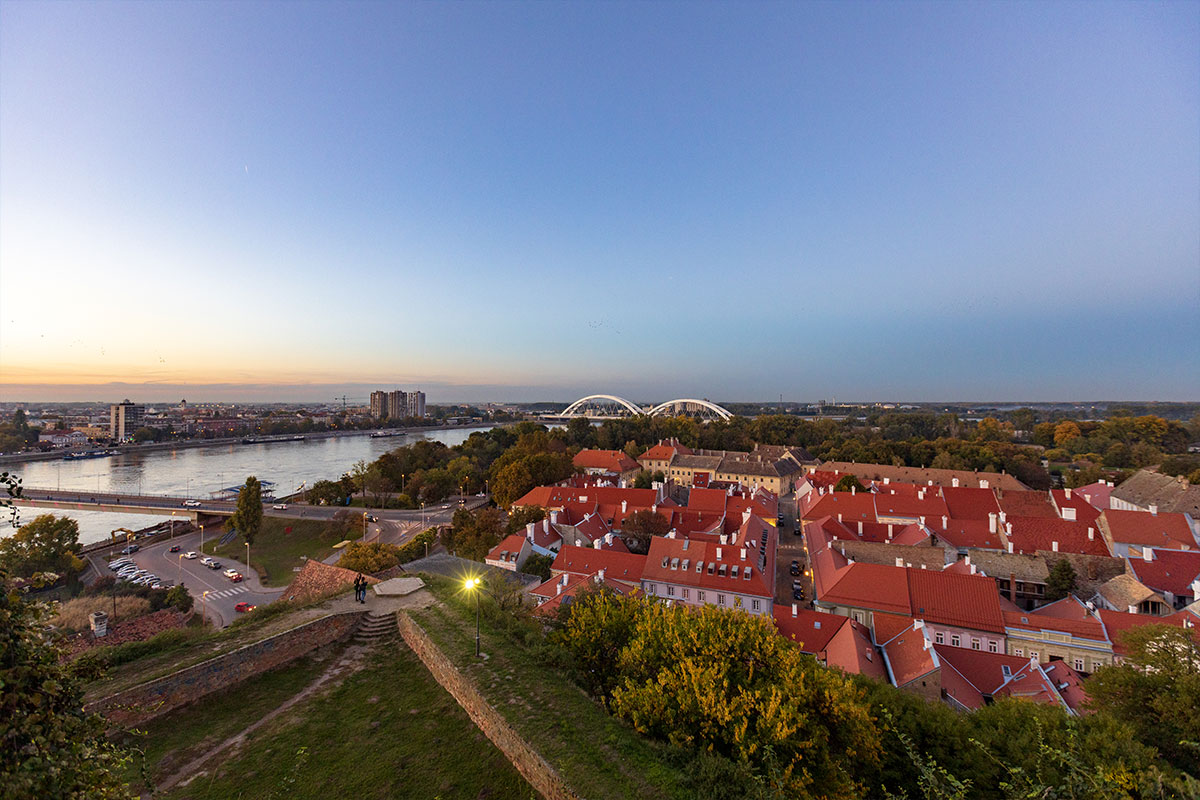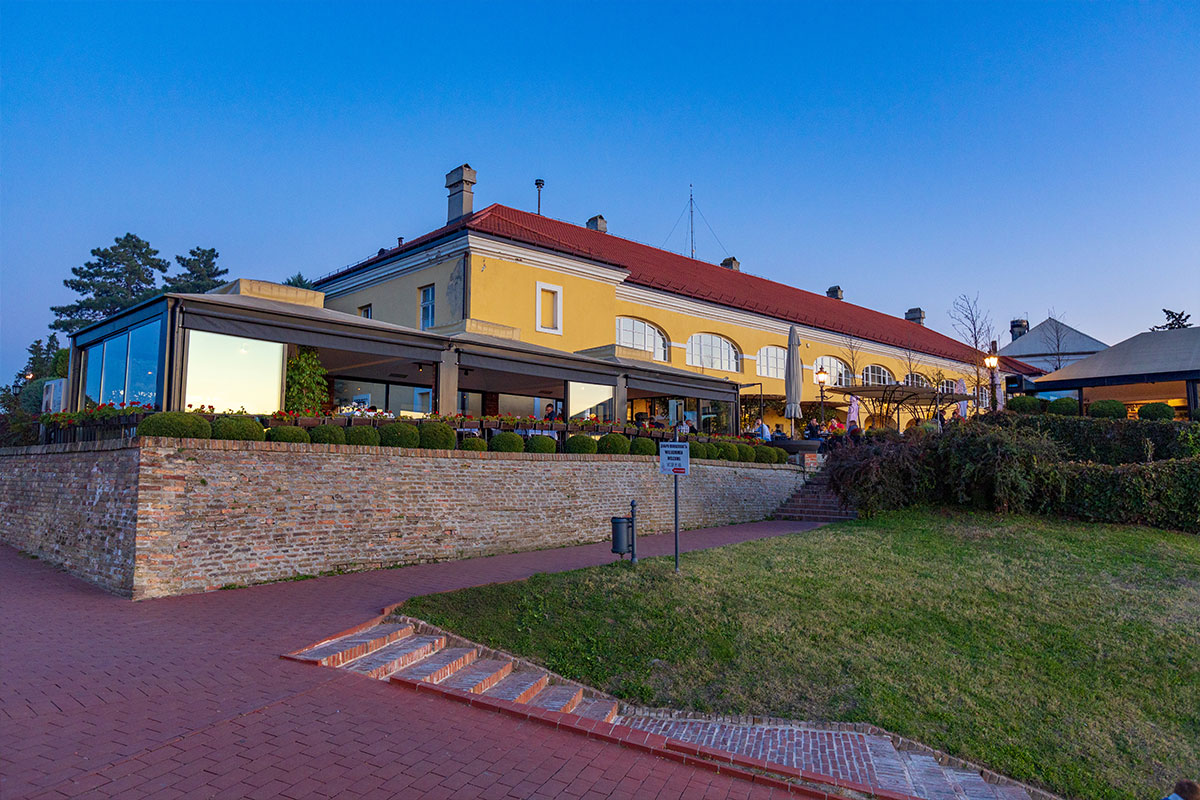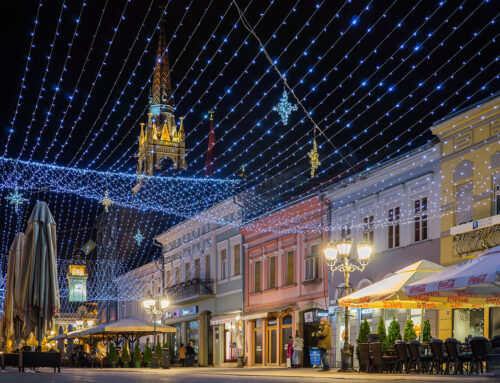Šarmantnom arhitekturom, fascinantnom istorijom, živopisnom kulturom i brojnim kafićima i restoranima, Novi Sad je, zajedno sa svojom okolinom, mesto gde svako može biti potpuno opušten i osećati se dobrodošlim. Naša je preporuka da ga istražite šetajući njegovim ulicama, posebno onim u starom gradskom jezgru i podgrađu Petrovaradinske tvrđave.
Obilazak Novog Sada tako treba početi od najvažnije turističke atrakcije grada, Petrovaradinske tvrđave, jedne od najočuvanijih i najvećih tvrđava Evrope, koja je zbog svoje nekadašnje slave poznata po nadimku Gibraltar na Dunavu. U obilasku Gornjeg grada Tvrđave videćete najpoznatiji simbol Novog Sada, Sat kulu, poznatu pod nadimkom Pijani sat, kao i Oficirski paviljon i Terasu Tvrđave gde se nalaze popularni restorani. Predlažemo uz prethodnu najavu posetu Muzeju Grada sa Ratnim bunarom, kao i Podzemnih vojnih galerija, jedinstvenoj atrakciji koridora i hodnika starog odbrambenong sistema. Možete otkriti i ateljee umetničke kolonije Likovni krug, koja okuplja slikare, fotografe, vajare, dizajnere ili Atelje 61, jedinstvenu instituciju za izradu umetničkih tapiserija. Predlažemo i šetnju Donjim gradom Tvrđave, Gradićem, poznatom po starim baroknim građevinama. Uz prethodnu najavu ovde možete posetiti Rimokatoličku Crkvu Sv. Juraja sa atraktivnom kriptom (katakombama) i Srpsku pravoslavnu Crkvu Sv. Pavla.
Možete ručati u restoranima u Centru grada, na Petrovaradinskoj tvrđavi ili na popularnom Ribarskom ostrvu. I Dunavski kej može biti posebno zanimljiv jer nudi lep pogled na tvrđavu ili kafiće u kojima se možete opustiti uz kaficu, kolač i smirujuć pogled na Dunav.
Centralni deo programa je nezaobilazno Staro gradsko jezgro Novog Sada počev od Trga slobode, Zmaj Jovine do Dunavske ulice. Trgom slobode dominiraju Gradska kuća i Rimokatolička Crkva Imena Marijinog, najviša bogomolja u gradu. U obilasku se moze naći i Katolička porta, prijatan, mali trg, zaklonjen Rimokatoličkom Crkvom Imena Marijinog, a u blizini Trga slobode je i Sinagoga, bogomolja novosadskih Jevreja koju uz prethodnu najavu mozete posetiti. Zmaj Jovina i Dunavska ulica su pešački prostori ispresecani pasažima u kojima je mnoštvo prodavnica, restorana, poslastičarnica i zanatskih radnji. Među najznačajnije građevine u ovoj zoni ubraja se Vladičanski dvor Eparhije bačke, podignut u srpsko-vizantijskom stilu. Uz sam Dvor je katedralna Srpska pravoslavna Crkve Svetog Georgija, a ispred Dvora je spomenik lekaru i pesniku Jovanu Jovanoviću Zmaju.
Dunavska ulica počinje Zgradom Kod Belog lava (prva pol. 18. veka) i zgradom Gradske biblioteke. U ulici se nalaze i Zbirka strane umetnosti, Muzej Vojvodine i Muzej savremene umetnosti Vojvodine, koje uz prethodnu najavu mozete posetiti. Obilazak mozete zavrsiti u Dunavskom parku, spomeniku prirode uredjenom u 19. veku.
U centru grada je i Trg galerija gde se nalaze reprezentativne galerijske postavke nacionalnog značaja: Galerije Matice srpske, Spomen-zbirka Pavla Beljanskog i Galerija likovne umetnosti Poklon zbirka Rajka Mamuzića.
Ako ste ljubitelj prirode, sada je pravo vreme za Frušku goru. Poseta vinogradima i vinskim podrumima, poseta manastirima, pešačenje markiranim planinskim stazama, samo su neke od aktivnosti koje ova planina nudi. Ovome treba dodati i gastronomske užitke u ambijentu u kom se svi osećamo udobno, te toplo preporučujemo riblju čorbu na dunavskim čardama ili spori obrok na salašima u neposrednoj blizini grada, gde u jesenjem periodu dominira bundeva, paradajz, specijaliteti od paprike, a u slatkom delu menija dunja, jabuka, kruška, grožđe, lešnici, orasi, bundeve.
Nezaobilazna stanica na vašem putu su i bajkoviti Sremski Karlovci, barokni gradić veoma važan za istoriju Srba jer je u njemu bilo sedište Karlovačke mitropolije i patrijaršije. U obilasku starog jezgra videćete spomenike kulture i institucije nastale pretežno tokom 18. i 19. veka Bogosloviju, drugu u pravoslavnom svetu, Karlovačku gimnaziju – prvu kod Srba, Patrijaršijski dvor, Sabornu crkvu – barokni hram posvećen Sv. Nikoli, Kapelu mira – podignutu na mestu gde je potpisan Karlovački mir 1699, Bogoslovski seminar – internat za đake Bogoslovije, Česmu “Četiri lava” podignutu u čast završetka prvog vodovoda. Grad ima dugu tradiciju u gajenju vinove loze i proizvodnji vina pa preporucujemo unapred najavljenu posetu nekoj od vinarija uz degustaciju vina.
U neposrednoj blizini Sremskih Karlovaca, na teritoriji Nacionalnog parka Fruška gora, možete posetiti izletište Stražilovo, gde se nalazi grob pesnika Branka Radičevića, restoran i planinarski dom. Posetite i neki od manastira Fruške gore poput Krušedola, Grgetega ili Velike Remete. Ukoliko se opredelite za posetu manastiru Novo Hopovo u njegovoj blizini je i popularno izletište Iriški venac gde se nalazi monumentalni spomenik Sloboda.
U saradnji sa novosadskim hotelima Turistička organizacija Grada Novog Sada vam nudi i specijalnu ponudu #Plati2NociOstani3
















Social Network